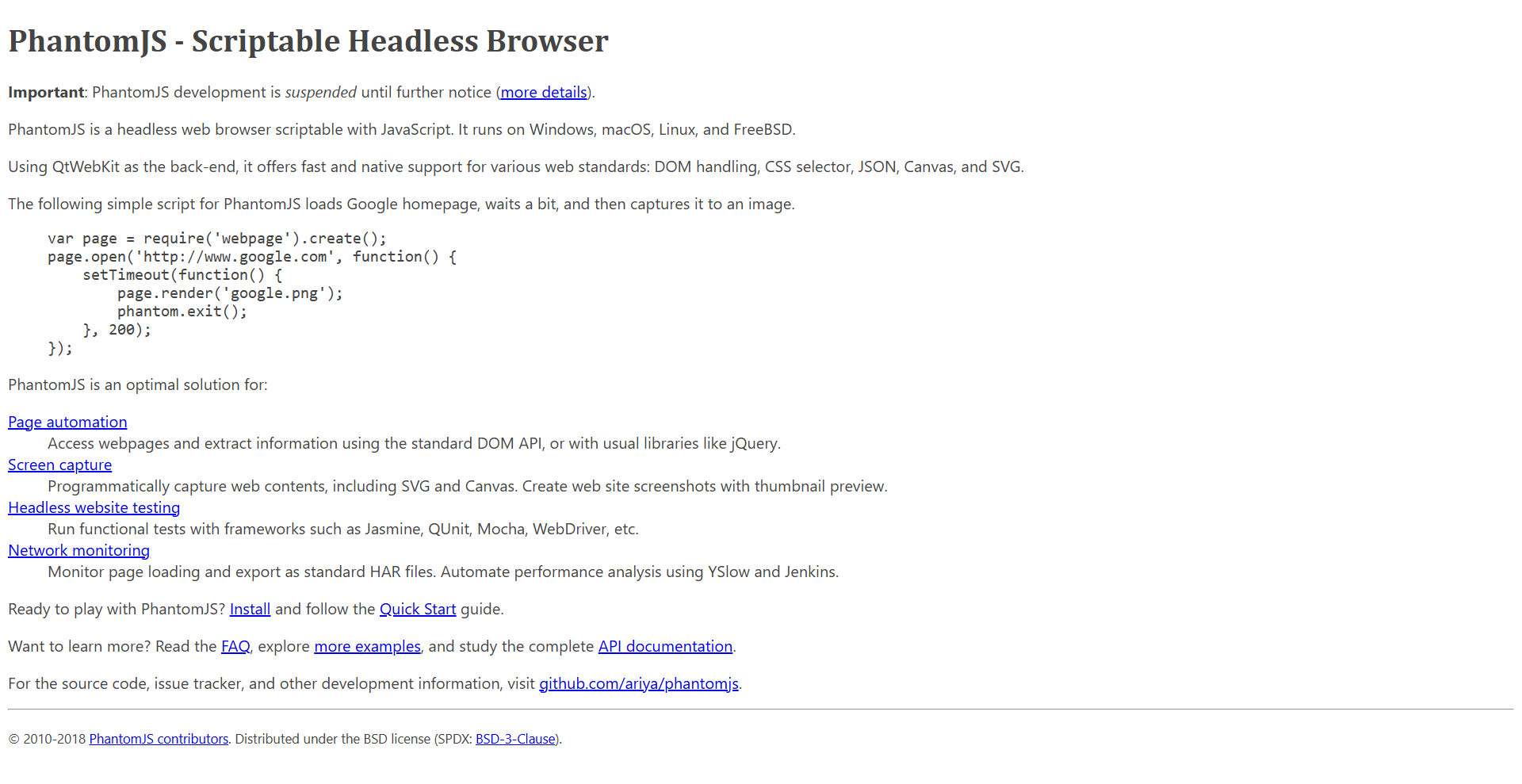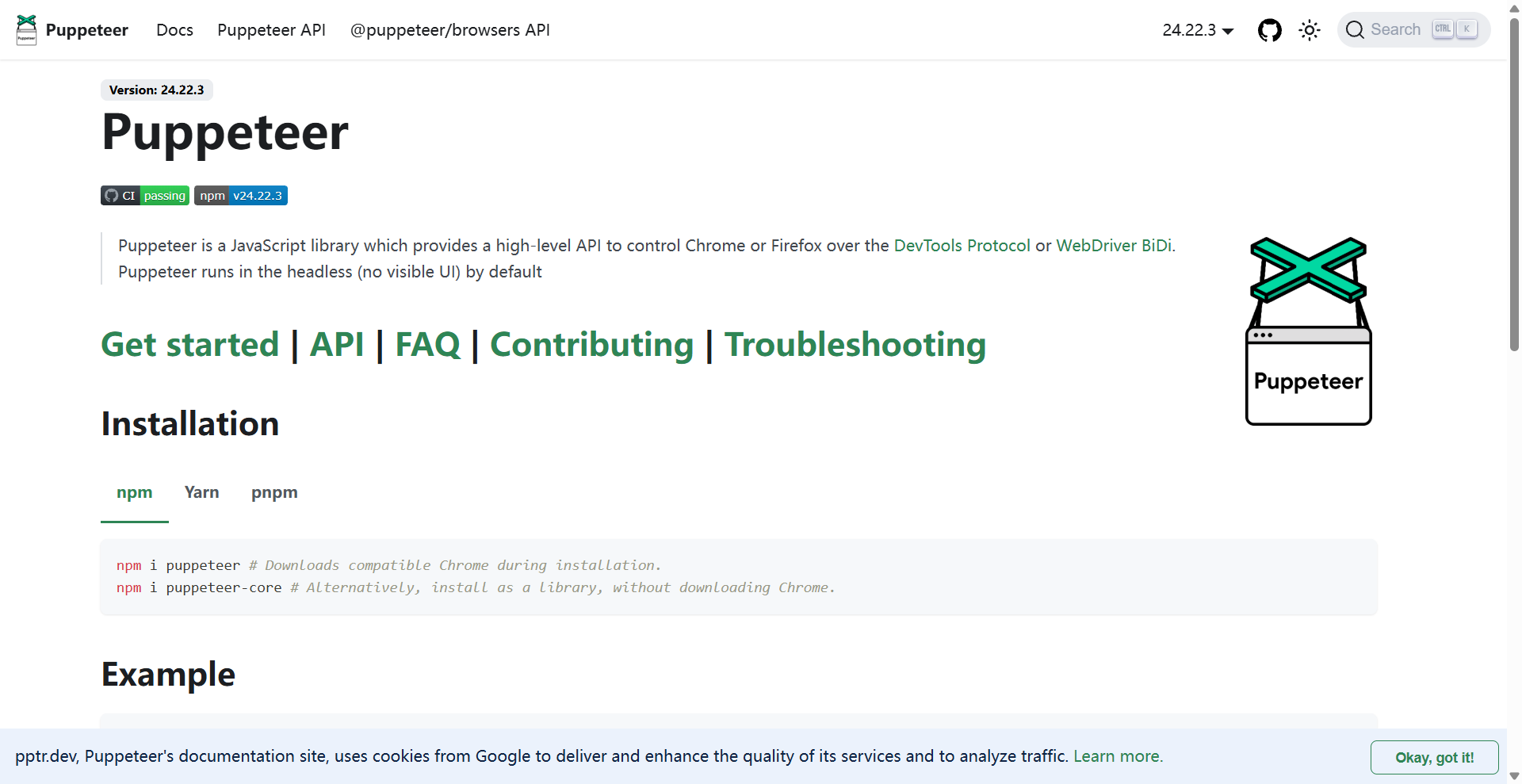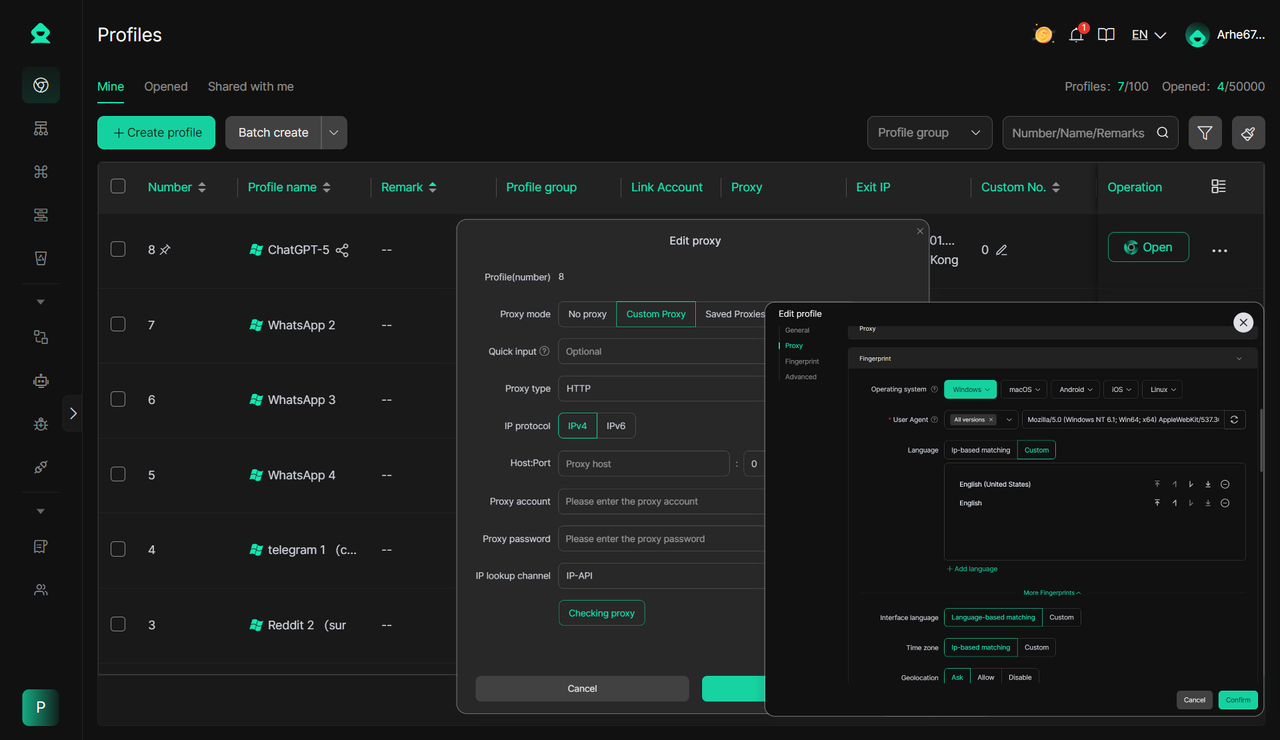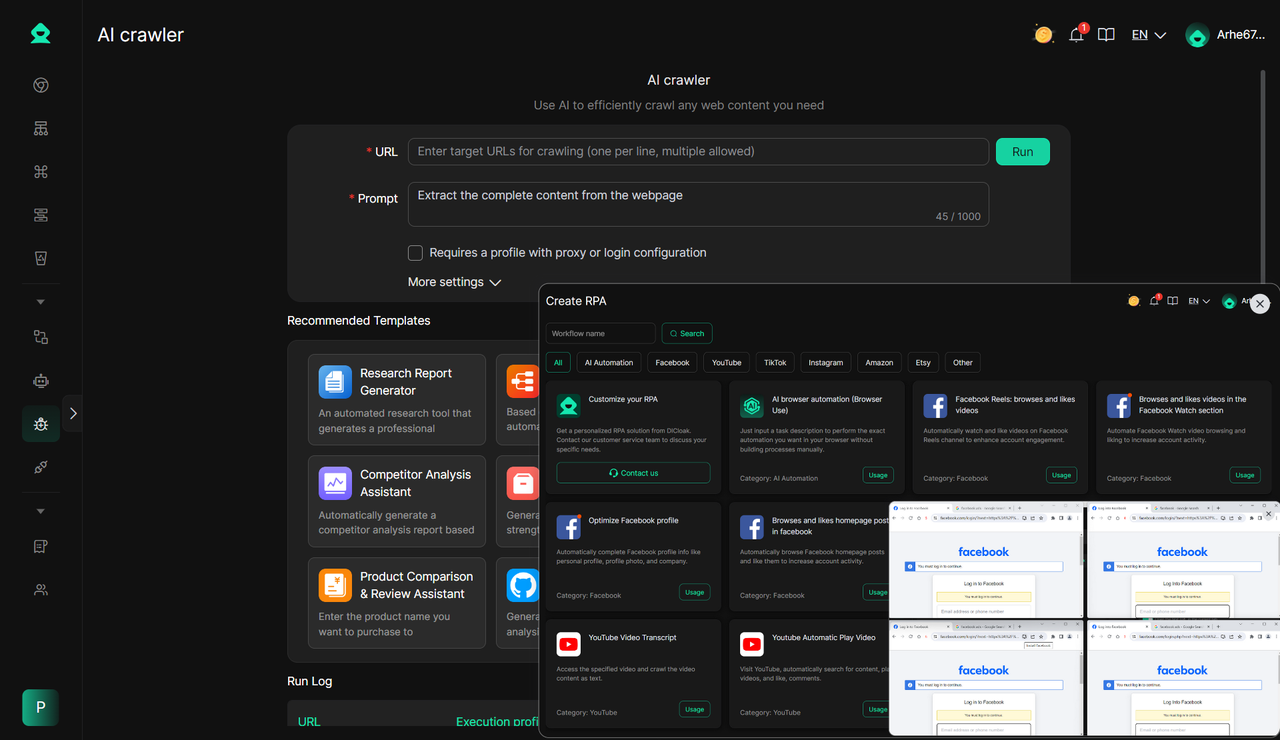The internet has become an essential part of our daily lives, and the tools we use to navigate it are constantly evolving. One such tool is the headless browser, which operates without a graphical user interface (GUI). While traditional browsers like Chrome and Firefox rely on a visual interface that allows users to interact with web pages directly, headless browsers do the same work, but without displaying the web pages on a screen. This makes them perfect for tasks that don’t require human interaction with the visual elements of the web, such as automated testing, web scraping, and performance monitoring.
In this article, we will explore the concept of a headless browser, how it works, its uses, and some common examples. We will also compare it with anti-detect browsers and highlight the advantages of using specialized tools like DICloak for tasks that require enhanced security and privacy. Whether you're a developer, SEO professional, or simply curious about this innovative technology, understanding headless browsers can help you unlock new possibilities in automation and web management.
What is a Headless Browser?
A headless browser is a type of web browser that works without a graphical user interface (GUI). Unlike traditional browsers, it operates in the background and doesn’t display any visual content. In simple terms, a headless browser runs like a standard browser but doesn’t show anything on the screen. This makes it perfect for tasks where human interaction with the browser is not necessary, such as automation or web scraping.
How is a Headless Browser Different from a Traditional Browser?
The key difference between a headless browser and a traditional browser lies in the absence of a graphical interface.
- Traditional Browsers: Browsers like Google Chrome and Mozilla Firefox are designed for human users. They display websites with all the usual elements like images, text, videos, and buttons, which users can interact with.
- Headless Browsers: These browsers do not show any graphical interface. They operate behind the scenes, processing the website’s data and interacting with it, but they do not display it visually on the screen.
This lack of a visible interface allows headless browsers to perform tasks quickly and efficiently, making them ideal for automation, testing, and other activities where visual feedback is not required.
Basic Features of a Headless Browser
Here are the key characteristics that define a headless browser:
- No Visual Interface: The primary feature of a headless browser is that it doesn’t display content on a screen. It runs silently in the background and does the same tasks as a regular browser, but without showing the web pages.
- Automation and Control: You can programmatically control a headless browser through code or scripts. This means developers can automate processes like filling forms, clicking buttons, or taking screenshots without any manual input.
- Speed and Efficiency: Since there’s no need to render and display a webpage for the user, headless browsers typically run faster and use fewer system resources compared to traditional browsers.
- Support for Modern Web Technologies: Despite lacking a visual interface, headless browsers still support HTML, CSS, and JavaScript, allowing them to interact with websites and web applications just like a traditional browser would.
In essence, a headless browser is a powerful tool that allows developers to automate and test web pages efficiently, all while operating behind the scenes and using fewer resources than traditional browsers.
Uses of a Headless Browser
A headless browser is a versatile tool that plays an essential role in various tasks. Its ability to operate without a graphical interface makes it particularly suitable for automated operations where visual output is not necessary. Below are some common uses of a headless web browser.
1. Automated Testing
One of the most popular uses of a headless browser is in automated testing. Testing web applications and websites manually can be time-consuming and prone to human error. With a headless browser, developers can run automated tests efficiently and at scale.
- Functional Testing: Headless browsers are ideal for functional testing, where the goal is to ensure that all the features of a website or application work as expected. For example, you can use a headless browser to check if buttons, forms, and navigation links work properly without manually interacting with the interface. This allows developers to catch bugs or errors in the functionality of the website quickly.
- Performance Testing: A headless web browser is also useful for testing the performance of a website. Since it does not need to render visual elements, it can simulate user interactions much faster than traditional browsers. Performance testing might include checking the page load time, responsiveness, and how a website handles large amounts of traffic. This allows developers to identify performance issues early in the development process.
2. Web Scraping
Another common application of headless browsers is web scraping. Scraping is the process of extracting data from websites, and headless browsers are an excellent tool for this job because they can interact with websites as if they were real users.
Since headless browsers can parse HTML, execute JavaScript, and interact with dynamic content, they allow you to scrape data from websites that require user interaction or JavaScript rendering. For instance, you can scrape product information from an e-commerce website, extract news articles, or gather data from complex web applications without needing to manually visit each page.
3. Performance Monitoring
Headless browsers are also widely used in performance monitoring. They can simulate real user interactions and monitor how websites perform under various conditions. This is particularly useful for businesses and developers who want to track the performance of their sites over time.
By using a headless web browser, you can automate the process of testing different aspects of a website, such as checking page speed, testing the responsiveness of web applications, and identifying bottlenecks that could affect user experience. This continuous monitoring helps in maintaining high website performance and ensuring a smooth user experience.
5. Other Use Cases (Including SEO Optimization)
In addition to testing, scraping, and performance monitoring, headless browsers also have applications in SEO optimization.
- SEO Crawling: Search engine crawlers use headless browsers to scan websites and gather important data for indexing. By simulating how search engines render and interact with a website, you can analyze how well a website is optimized for search engines. This includes checking the structure, content, and technical SEO factors that affect rankings.
- Automated Content Validation: Headless browsers can also automate the process of validating on-page SEO elements, like checking for broken links, missing meta tags, or ensuring proper keyword usage across pages.
In conclusion, the flexibility of a headless browser makes it a powerful tool for a variety of use cases, from automated testing to performance monitoring and SEO optimization. Its ability to perform tasks quickly and without a visible interface provides significant time-saving and efficiency benefits in both development and business operations.
Common Headless Browsers
There are several popular headless browsers available, each with unique features that make them suitable for different use cases. Below are three of the most widely used headless browsers:
Headless Chrome is the headless version of Google Chrome, one of the most widely used web browsers. It allows you to run Chrome in a headless mode, meaning it operates without a graphical user interface (GUI).
Key Features:
- Full Browser Capabilities: Since it is based on Chrome, it supports all modern web technologies like HTML5, CSS3, and JavaScript.
- Fast Execution: It is fast and efficient, making it ideal for tasks like web scraping, automation, and testing.
- Developer Tools: Headless Chrome provides access to Chrome’s developer tools, which makes debugging and inspecting pages much easier.
Suitable For:
- Web Scraping: Headless Chrome can interact with dynamic content and execute JavaScript-heavy websites, making it great for scraping complex pages.
- Automation: It is widely used for automating web interactions, such as form submissions, UI testing, and performance monitoring.

PhantomJS is an older, but still popular, headless browser known for being lightweight and fast. Unlike Headless Chrome, PhantomJS is a custom-built browser specifically designed for headless operation.
Key Features:
- WebKit Engine: PhantomJS uses the WebKit engine, which provides similar capabilities to Safari. This makes it compatible with many websites.
- JavaScript Support: It can execute JavaScript and interact with dynamic content.
- Fast Rendering: PhantomJS is known for its fast page rendering and execution, making it suitable for high-performance web scraping tasks.
Suitable For:
- Testing: It is used for running automated tests on websites and web applications.
- Web Scraping: PhantomJS excels in scraping websites that require JavaScript execution, especially those with complex layouts.
Note: While PhantomJS is still used, it is no longer actively maintained, and many developers have shifted to Headless Chrome or Puppeteer for more modern features and better support.

Puppeteer is a Node.js library developed by Google that provides a high-level API to control Headless Chrome or Chromium. While Puppeteer itself is not a browser, it is a powerful tool for interacting with headless browsers.
Key Features:
- Full Control Over Chrome: Puppeteer provides a simple API to control Headless Chrome, including actions like navigation, screen capture, form submission, and more.
- JavaScript Rendering: It can interact with JavaScript-heavy websites, making it suitable for scraping and automating dynamic content.
- Headless and Headed Mode: While it is used in headless mode for automation, it can also run with a GUI for debugging purposes.
- Screenshot and PDF Generation: Puppeteer can take screenshots and generate PDFs of web pages.
Suitable For:
- Web Scraping: Puppeteer is excellent for scraping content from websites that require interaction and JavaScript execution.
- Automated Testing: It is used for functional testing, where automated browser interactions are needed to simulate real user behaviors.
- SEO Monitoring: Puppeteer is also used for SEO purposes to analyze page content, metadata, and other critical SEO factors.

In summary, these three headless browsers are popular choices for automating web tasks, testing, and scraping. Headless Chrome offers full browser capabilities, PhantomJS is a lightweight option, and Puppeteer provides an advanced API to interact with headless browsers. Each tool has its own strengths, making it essential to choose the right one based on the task at hand.
Headless Browser vs Anti-Detect Browsers
When working with web automation, scraping, or testing, understanding the difference between headless browsers and anti-detect browsers is crucial. While both have their uses, they serve different purposes and come with distinct advantages and limitations.
Limitations of a Headless Browser
Headless browsers are incredibly efficient for automating tasks, but they do have some limitations:
- detect by Websites: Since headless browsers operate without a visual interface, websites can easily detect that they are not being used by a real user. Many websites use scripts to identify headless browsers by looking for characteristics like missing mouse movements, lack of user interaction, and browser fingerprints.
- Lack of Advanced Security Features: While headless browsers can handle most automated tasks, they lack the security features needed to protect sensitive data or evade detect by websites that employ anti-bot mechanisms. This makes headless browsers less suitable for scenarios where privacy and security are crucial.
- Limited Fingerprint Control: Headless browsers often do not provide the level of control needed over browser fingerprints (like IP address, user-agent string, and other identifiers) that some websites may use to track or block automated activity.
Advantages of anti-detect Browsers
Anti-detect browsers, like DICloak, offer more sophisticated features to overcome the limitations of headless browsers. These browsers are designed to evade detection and mimic real user behavior to ensure higher security and effectiveness in sensitive automation tasks.
Key Advantages of anti-detect Browsers:
- Advanced Fingerprint Management: anti-detect browsers provide greater control over browser fingerprints, which helps in avoiding detect by websites that use sophisticated tracking techniques. For example, DICloak can manage and rotate multiple IP addresses, spoof user-agents, and handle cookies to simulate legitimate user activity.
- Better Security and Privacy: anti-detect browsers prioritize user privacy and security by offering encryption, masking, and other protective features. For users conducting tasks like web scraping or managing multiple accounts, using an anti-detect browser ensures that their data and identity remain secure.
- Evade Anti-Bot Mechanisms: Websites often use advanced bot detect tools like CAPTCHAs, IP blocking, and JavaScript challenges. anti-detect browsers like DICloak help bypass these security measures by mimicking human behavior, making it harder for websites to distinguish between real users and automated scripts.
- Browse profile Isolation: anti-detect browsers like DICloak offer isolation of browsing Browse profiles, meaning that each session operates independently, preventing cross-contamination between accounts and activities. This feature is especially beneficial for users who manage multiple accounts or need to prevent tracking by websites.
Why DICloak Stands Out
DICloak offers superior features compared to traditional headless browsers for tasks that require enhanced security and evasion of detect. Some of the standout features include:
1. Profile Isolation for anti-detect
- Fingerprint Masking: DICloak isolates each account with unique fingerprints, including user-agent, device settings, and IP addresses, preventing accounts from being linked.
- IP Masking: By using proxies and rotating IPs, DICloak ensures that each account appears as if it’s accessed from different locations, protecting you from detect and suspension.
This makes DICloak ideal for managing multiple ad accounts without the risk of account bans or linking, especially when running A/B tests or targeting different audiences.

2. Automation for Facebook Ads Management
- RPA Templates & Window Sync: DICloak helps synchronize tasks across multiple windows, streamlining processes like ad management and testing.
- AI Crawler: Automatically extracts competitor data and tracks ad performance, saving time on manual tasks and allowing teams to focus on strategy.
These tools automate repetitive tasks, increasing efficiency in Facebook ads management, letting teams focus on creative work.

While headless browsers are excellent tools for automation, testing, and scraping, they have limitations when it comes to evading detect and ensuring security. For users who require more robust features like fingerprint management, enhanced security, and the ability to bypass anti-bot measures, anti-detect browsers like DICloak are the superior choice. DICloak provides all the benefits of a headless browser, with additional features to ensure privacy, security, and uninterrupted automation.
Download DICloak today and participate in our promotional activities to earn exclusive rewards!
FAQs About Headless Browsers
1. What is the best headless browser?
The best headless browser depends on your needs. Popular choices include:
- Headless Chrome: Known for its full browser capabilities and high performance.
- Puppeteer: A Node.js library that controls Headless Chrome, great for automation.
- PhantomJS: A lightweight option but now discontinued.
Each has its strengths, with Headless Chrome and Puppeteer being widely used for modern automation tasks.
2. What are examples of headless web browsers?
Some common examples of headless web browsers include:
- Headless Chrome
- PhantomJS (now discontinued)
- Puppeteer (which works with Headless Chrome)
- Playwright (similar to Puppeteer but supports multiple browsers)
These browsers run without a GUI, making them ideal for automation and testing.
3. Which browser has its own headless mode?
Google Chrome and Firefox both offer headless modes. This means you can use them without the graphical interface, which is useful for tasks like web scraping, automated testing, and data extraction. Chrome’s headless mode is most commonly used, especially with tools like Puppeteer.
4. Is Firefox a headless browser?
Yes, Firefox can run in headless mode, starting from version 56. It provides a similar experience to Headless Chrome, allowing users to automate tasks and run tests without a graphical interface. Firefox’s headless mode is typically used with automation frameworks like Selenium or Geckodriver.
These headless modes are highly valuable for developers and testers who need to run browser tasks without a UI.